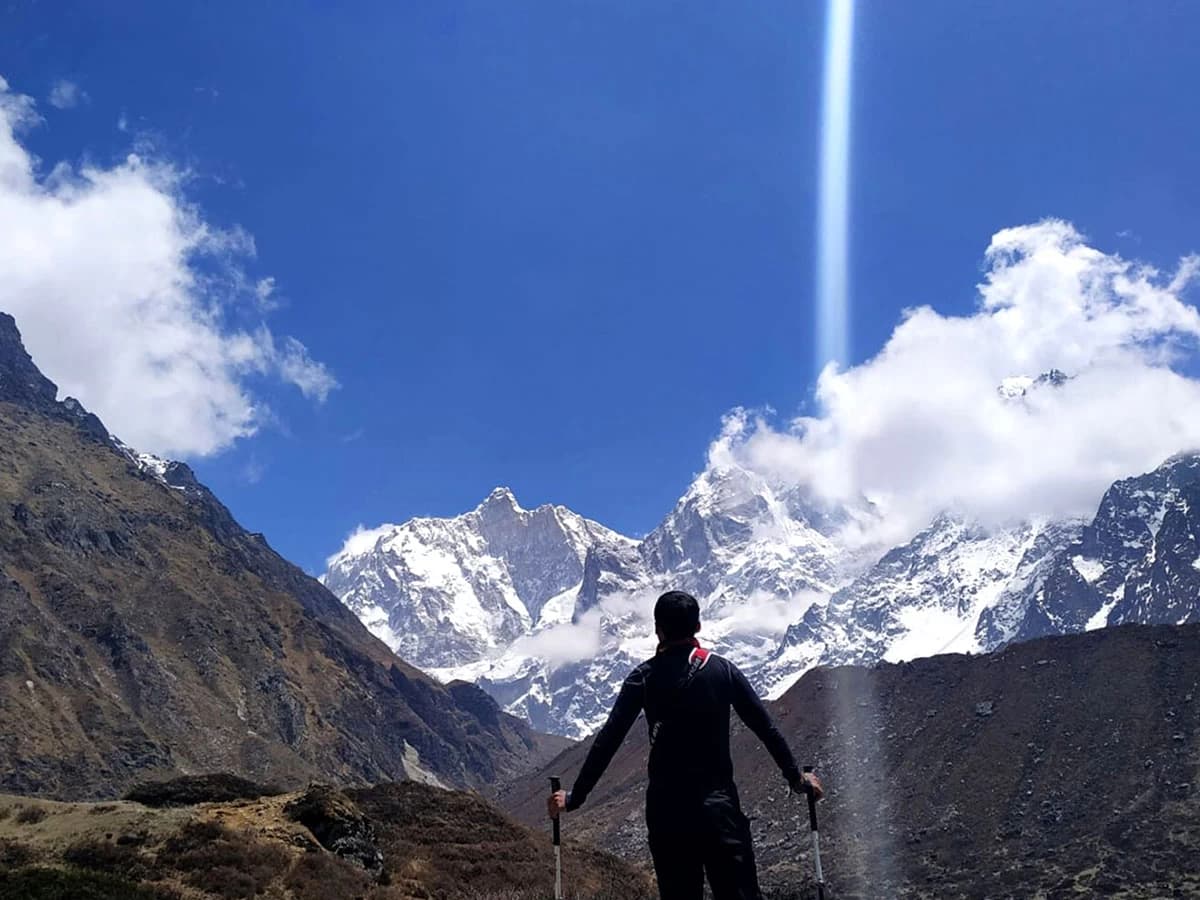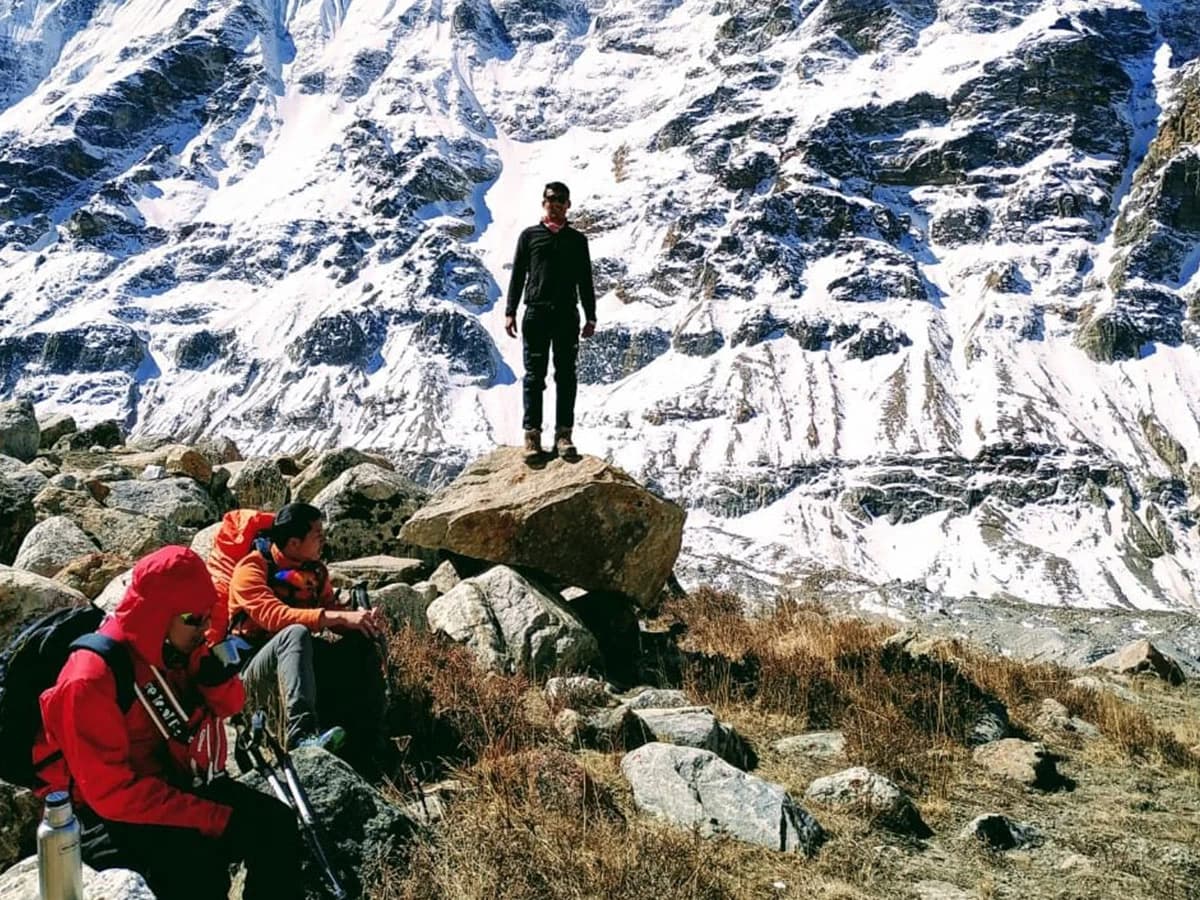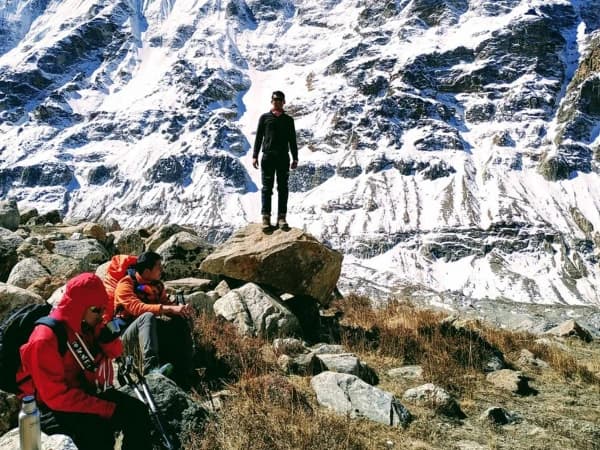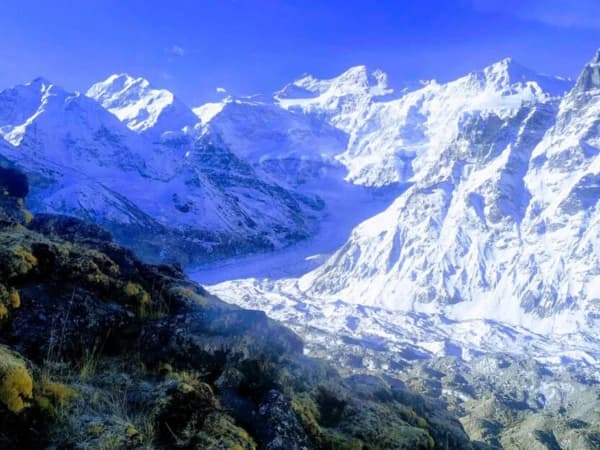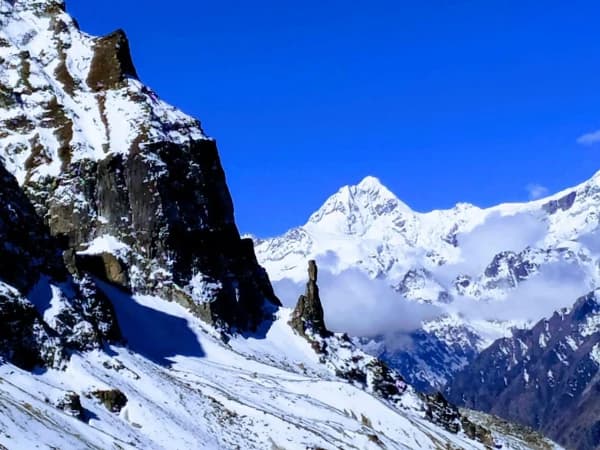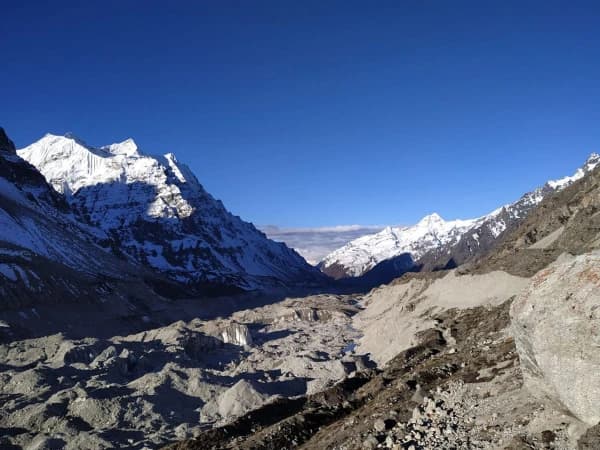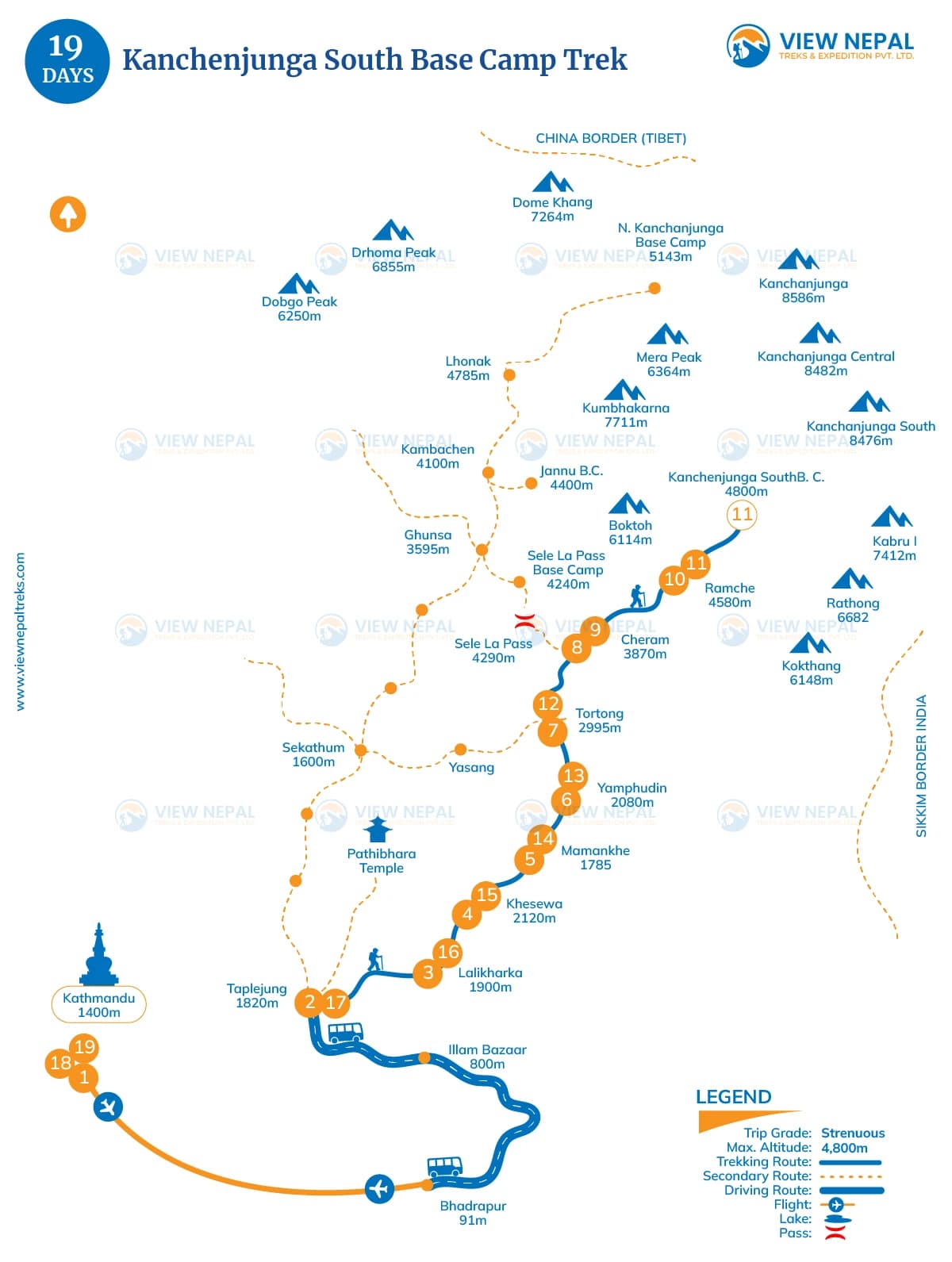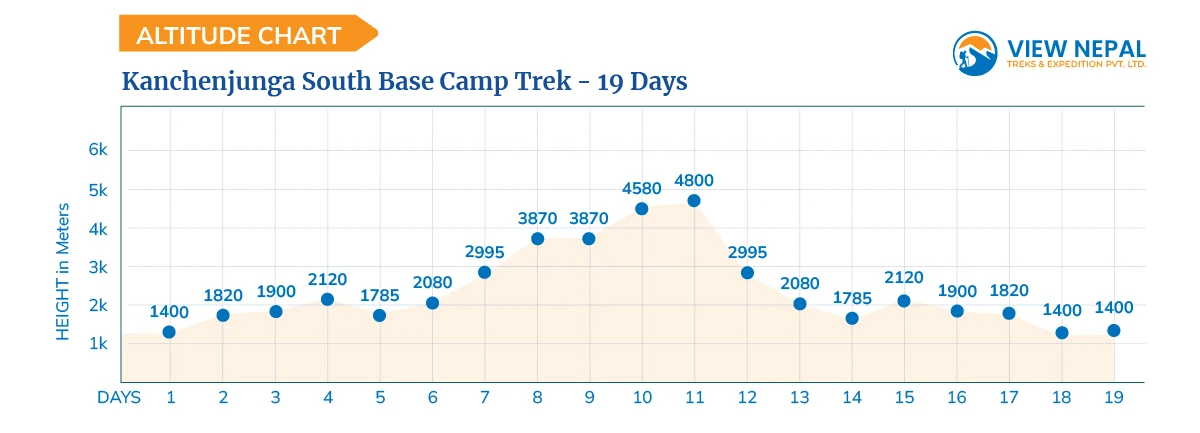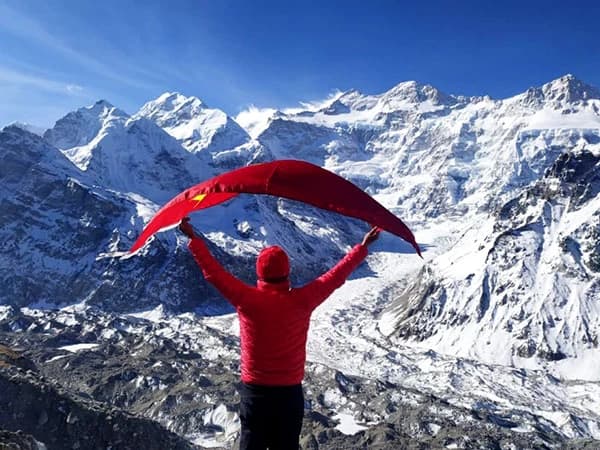The Kanchenjunga South Base Camp Trek is a captivating journey to the heart of eastern Nepal’s remote wilderness, leading trekkers to the base of the world’s third-highest peak, Mount Kanchenjunga (8,586 meters). This off-the-beaten-path adventure combines mesmerizing landscapes, lush forests, and traditional villages while offering trekkers an immersive cultural experience and views of pristine natural beauty.
Unlike Nepal's more popular trekking routes, the Kanchenjunga South Base Camp Trek is relatively untouched, providing trekkers with a true sense of solitude and connection with nature. The trail sees fewer trekkers, offering an exclusive experience away from the crowd. For those seeking tranquility, this trek promises peace and a rare chance to explore Nepal’s unspoiled beauty.
The trek offers unparalleled views of Mount Kanchenjunga and other majestic peaks in the region. As trekkers ascend, they’re rewarded with breathtaking panoramas of the Kanchenjunga massif, Kabru, Rathong, and Jannu (Kumbhakarna) mountains. The South Base Camp, approximately 4,800 meters, presents a spectacular close-up view of the towering Kanchenjunga peak.
The trek passes through thick forests of rhododendrons, pine, and bamboo, especially vivid during the spring season when rhododendrons bloom in hues of red, pink, and white. The region is part of the Kanchenjunga Conservation Area, a protected area rich in biodiversity, where trekkers may encounter diverse wildlife like the elusive red panda, Himalayan black bear, and various bird species, adding a unique ecological element to the trek.
The trail meanders through traditional Limbu and Rai villages, where trekkers can witness local life up close. The local communities here follow ancient practices and are deeply connected to the land, offering trekkers the opportunity to interact with residents and gain insight into the indigenous culture, language, and rituals. Visitors are often welcomed with warm hospitality, making it a culturally enriching experience.
The Kanchenjunga South Base Camp Trek is considered a challenging trek, suitable for experienced trekkers with a good fitness level. The route involves steep ascents, rugged paths, and high-altitude trekking, making it an adventurous pursuit for those who enjoy physical and mental challenges. The journey itself becomes rewarding as trekkers push their limits and reach new heights.
Managed by the local community, the Kanchenjunga Conservation Area reflects the harmonious relationship between humans and nature. Spanning over 2,035 square kilometers, this protected area plays a crucial role in preserving the region’s unique flora and fauna while promoting sustainable tourism. Trekkers contribute to conservation efforts and support the local economy by trekking here, making the experience more meaningful.
One of the most scenic spots on the trek, Ramche (4,580 meters), serves as a base for the final push to the South Base Camp. Ramche’s stunning campsite, surrounded by snow-clad peaks and serene alpine landscapes, offers a mesmerizing experience for trekkers. From here, the walk to the base camp is filled with glacial streams, yak pastures, and views that make the effort worthwhile.
The Kanchenjunga South Base Camp Trek is a remarkable blend of scenic splendor, cultural richness, and challenging terrain. It’s perfect for trekkers who wish to venture off the typical trails in Nepal, experiencing both the grandeur of the Himalayas and the unique cultural tapestry of eastern Nepal.
Highlights
- Trek through pristine, untouched landscapes with fewer trekkers
- Immersing in the wilderness of the Kanchenjunga Conservation Area.
- Experience a unique ecosystem home to red pandas, snow leopards, and rare bird species
- with varied vegetation from subtropical forests to alpine meadows.
- panoramic views of Kanchenjunga (8,586m), Yalung Kang, and other towering Himalayan peaks, especially from the South Base Camp.
- Discover local communities, including Rai, Limbu, Sherpa, and Tibetan influences
- visit traditional villages like Ramche and Cheram.
- Reach the impressive Yalung Glacier, a scenic highlight near the base camp that offers dramatic glacial landscapes.
- Perfect for trekkers seeking solitude and adventure in one of Nepal's less-traveled regions
- offers a challenging, rewarding experience through Nepal’s eastern Himalayas, providing a deep sense of adventure and natural beauty.
Cost of Kanchenjunga South Base Camp trek
- The cost of the Kanchenjunga South Base Camp Trek varies based on the level of service:
Basic Trek (Budget): $1,500 - $2,000
- Includes permits, guide and porter, basic tea house accommodation, meals, and transportation.
Standard Trek (Mid-Range): $2,500 - $3,500
- It adds higher-quality accommodation and meals and slightly upgraded transportation options.
Luxury Trek: $4,000 - $6,000+
Who is Suitable for the Trek?
The Kanchenjunga South Base Camp Trek is best suited for experienced, physically fit trekkers comfortable with remote, high-altitude trekking. It’s ideal for adventure-seekers interested in nature and local cultures who are ready to handle rugged terrain with limited facilities. Due to the restricted area status, trekkers must obtain permits and be accompanied by a registered guide.
What can you Expect From the Kanchenjunga South Base Camp Trek?
On the Kanchenjunga South Base Camp Trek, you can expect a challenging and rewarding journey through remote eastern Nepal, marked by rugged trails, dense forests, alpine meadows, and breathtaking views of Kanchenjunga and neighboring peaks. The trek offers solitude, cultural encounters with Rai, Limbu, and Sherpa communities, and a rich variety of flora and fauna. With limited infrastructure, it provides a raw and immersive experience, requiring good physical fitness and mental resilience.
Why Trek With Us?
Trek with us for expert guidance, personalized service, and an authentic experience. Our experienced guides ensure safety and comfort on remote trails, while our tailored itineraries balance adventure with acclimatization and cultural immersion. We handle permits, logistics, and accommodations, so you can fully enjoy the journey, focusing on the breathtaking landscapes and meaningful connections.
Packing for Kanchenjunga South Base Camp Trek
Packing for the Kanchenjunga South Base Camp Trek requires thoughtful preparation for the remote and high-altitude conditions. Here’s a concise packing guide:
Clothing
- Base Layers: Moisture-wicking shirts, thermal tops, and leggings.
- Insulating Layers: Fleece or down jacket for warmth.
- Outer Layer: Waterproof jacket and pants for wind and rain protection.
- Trekking Pants and Shirts: Lightweight, quick-dry materials.
- Accessories: Warm hat, gloves, buff or neck gaiter, and a sun hat.
- Trekking Boots: Sturdy, waterproof, and broken-in boots with good ankle support.
- Camp Shoes: Lightweight sandals or sneakers for evenings.
- Socks: Moisture-wicking trekking socks and thermal socks for colder nights.
Gear
- Backpack: 50-60L pack with rain cover.
- Daypack: Small pack for essentials during day hikes.
- Sleeping Bag: Rated to at least -10°C (14°F).
- Trekking Poles: For stability on steep and rough trails.
- Headlamp: With extra batteries.
Personal Items
- Water Purification: Tablets or filters for safe drinking water.
- Toiletries: Eco-friendly soap, toothpaste, wet wipes, and hand sanitizer.
- First Aid Kit: Including altitude sickness meds, blister care, and pain relievers.
- Sunscreen and Lip Balm: High SPF for sun protection.
Miscellaneous
- Snacks: Energy bars and trail mix for extra fuel.
- Camera or Phone: This captures memories (with spare batteries or a power bank).
- Permits and Documentation: Trekking permits, ID, and cash for remote purchases.

